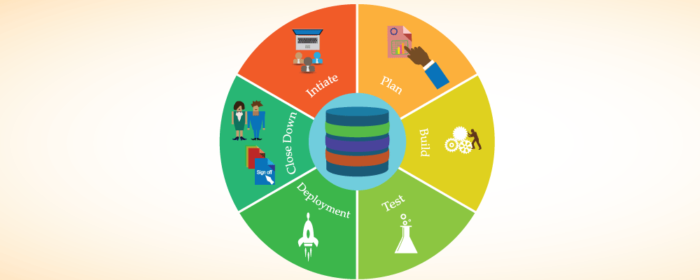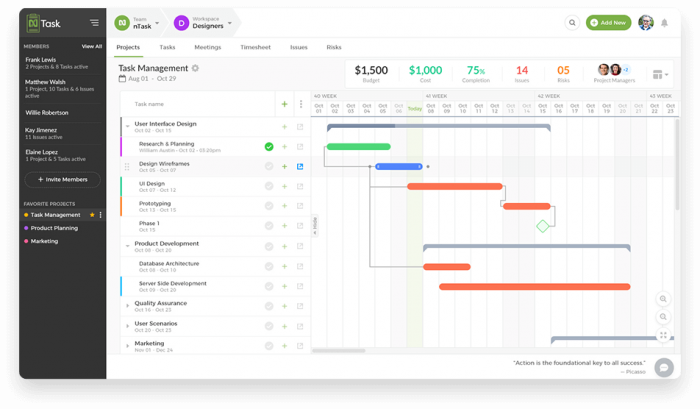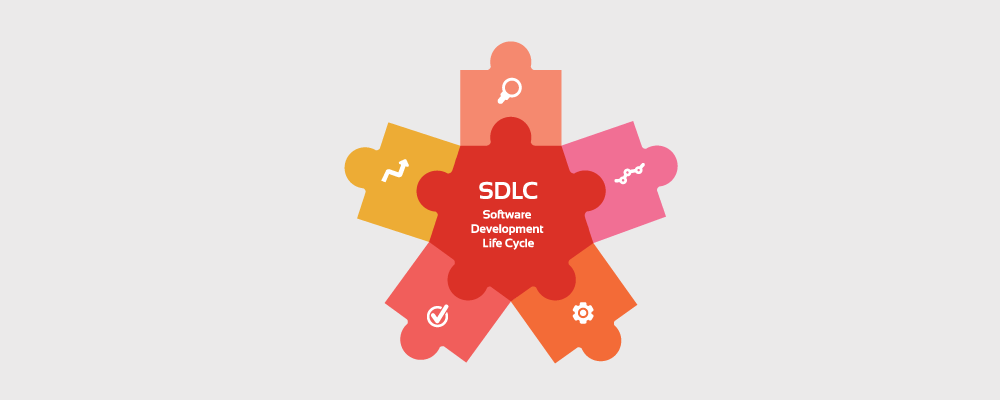The world is obsessed with project management methodologies. They are our lifelines when it comes to expanding our businesses and keep a close eye on them to generate more value.
But when we talk about project management methodologies included in our businesses, we mean that they should be incorporated in the development phase, so that they can seamlessly have the desired effect.
One of the best and most well-known methodologies project management paradigms right now is Agile.
The methodology is incredible when it comes to software development and that is exactly why, in this article, we are going to talk about the Agile Software Development Lifecycle and what it contains in 2024. Let’s begin.
What is the Agile Software Development Lifecycle?

The Agile SDLC methodology consists of collaborative decision-making between teams working on creating fully functional software. This software development is based on cyclical and iterative models and is completed in repetitive sprints that usually last a few weeks.
Let’s take a look at some of the methodologies that come under the Agile software development paradigm.
- Adaptive Software Development
- Kanban
- Scrumban
- Dynamic Systems Development (DSDM)
- Lean Software Development
- Disciplined Agile Delivery (DAD)
- Agile Modeling
- Scrum
- Extreme Programming (XP)
- Feature Driven Development
When we talk about the agile software development lifecycle, the whole point of the exercise is to make sure that the team creates a working software and delivers it to the client as quickly as possible.
But with so many different ways to achieve that, you have to make sure that you choose the right methodology, otherwise, you are never going to achieve your goal according to your needs and requirements.
Let’s now take a look at the agile process flow and find out how things work.
Agile Process Flow
Here is a list of steps that are included in the agile process flow.
- Concept: In this step of the agile process flow, projects are prioritized and envisioned for future development
- Inception: In the second step, all of the team members that are going to work in the agile software development lifecycle are identified, the initial environments and the requirements are discussed, and the budget for the whole endeavor is set
- Iteration: In this step, the development team working on the project works diligently to deliver a working piece of software that is developed iteratively with the help of requirements set at the start and the feedback that is received from the users
- Release: In this step, the quality assurance testing, documentation development, internal and external training is performed, and the final release of the iteration is pushed into production
- Production: In the production step of the agile process flow, there is ongoing support of the software
- Retirement: In the last step of the agile process flow, all of the activities come to an end, including the migration and the customer notifications
Making Agile Work for You and Your Project
As we know, there are many advantages and disadvantages to every single agile methodology. One thing that you need to understand is that the correct scenario to use the agile method is where the project stakeholders and the customers are readily available to give their valuable feedback.
Also, agile is used when the functional portions of the software or a ready software are quickly needed without any delay.
It is also used when flexibility is required to make sure that all of the changing requirements and needs are going to be well taken care of, and all of the team members can effectively collaborate.
But as with any change or difference in the normal course of events, integrating agile into all of the different aspects of your business can be quite challenging and overwhelming.
That is why we are going to talk about 4 activities that you can perform to seamlessly incorporate agile into your business. They are:
- Live Demonstrations: In this activity, the project managers or the people in charge deliver love demonstrations of the iterations that are happening in the software development cycle to show the progress of the whole process for everyone to see
- Remain Agile: In this step of the process, the changes that are received from the users or the customers are incorporated in the overall software development, so that the next iteration or the version of the software is better than the last one
- Daily Meetings: One of the most important interactions that the agile team has with each other is daily meetings. The project manager host different and consistent stand-up meetings to make sure that the team members are in-sync and there are no gaps when it comes to communication
- Share Feedback: In this step, the people in charge of the project receive different feedbacks from the customers and the stakeholders associated with the software and share that entire information with the development team before the next iteration begins so that they can have a better idea of what to do and what not to do in the next iteration
Using nTask to manage the Agile Lifecycle

Being one of the best project management applications in the market right now, it is only fitting that you use this amazing tool to manage the agile software development lifecycle of your whole project so that you get the desired output in the exact time frame that you wanted it to happen.
Here are some of the features of this incredible tool that you can also use while managing your agile lifecycle.
- Project management
- Task management
- Meeting management
- Risk management
- Bug tracking
- Kanban boarding
- Gantt charting
- Zoom integration
And much more.

-
Create Your Software Products With nTask
Manage tasks, bugs, projects, meetings, risks, and teams, all in one place. Sign up today!
- Get Started for Free
Conclusion
This was a comprehensive guide on the agile software development lifecycle that you can use in 2024. If you think that we failed to mention something important in the guide, feel free to let us know and we will check it out ASAP.

